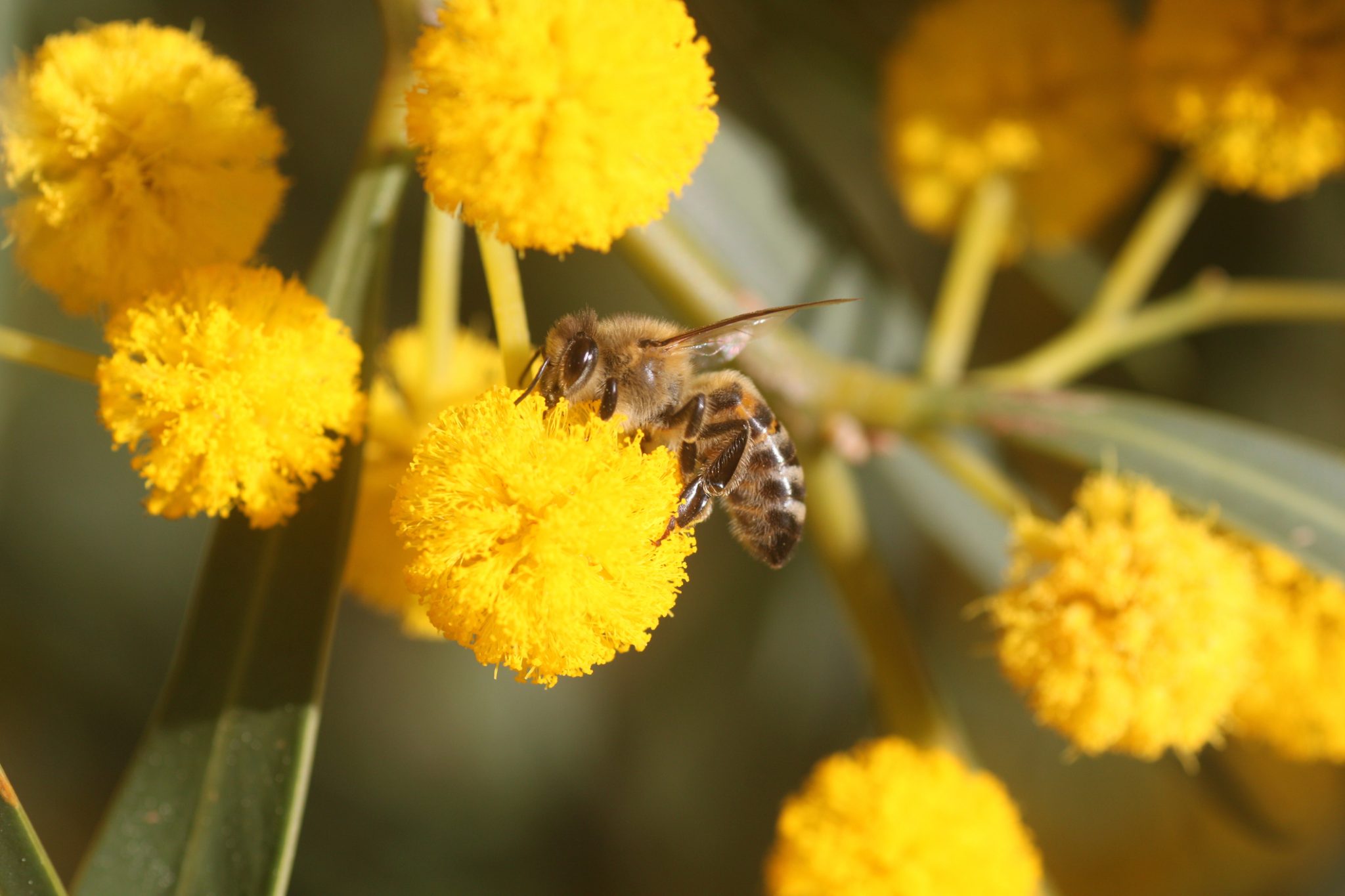A Guide to Wattle Flowers – And Why They Matter to the Bees
All plants serve a purpose in supporting life on Earth: from improving the quality of air to providing shelter and food for native wildlife. By preserving the flora, we protect all living things and promote biodiversity.
Not surprisingly, biodiversity starts with safeguarding pollinators, such as the native Australian bees. And what better way to attract these bees than to cultivate one of the most well-known flowering plants in Australia, the wattle.
The wattle and Australia
Wattle flowers come from the wattle, a tree from the Fabaceae family also known as the bean or legume family. They are distinctive in that their large, fluffy flower head is composed of other small flowers that give off a sweet scent. Of the 1,300 wattle tree species, 950 of them are native to Australia.
These species are tough and they can withstand the Australian bushfires and droughts, as well as the rough winds. In fact, the mature wattle can live on the soil for extended periods (up to almost a decade) and re-sprout after the fires, continuing their cycle and role in the bionetwork.
No wonder the wattle is our national flower; it is a symbol of the Australian spirit and resilience!
When they bloom
September 1st in Australia marks the end of winter and the beginning of spring, which is mostly when these flowers bloom. Consequently, Wattle Day also lands on September 1st.
However, these flowers are also known to bloom in autumn, winter, and summer.
What does all this mean for the bees?
We know that bees play a crucial role in the ecosystem, as they are responsible for the pollination of plants. To pollinate, bees will need to collect pollen from flowers. Pollen, just like nectar, serves as food that bees bring back to the colony.
Wattle flowers do not produce nectar. They only produce pollen, which is rich in protein. It’s a good thing that wattles are in abundance almost all year round.
Wattle trees that bloom during the wintertime, like the Winter Wattle, Sydney Golden Wattle, Queensland Silver Wattle, and the Cootamundra Wattle, are an important source of food for the native Australian bees. They will harvest the pollen and carry it back to their hive, where the big, heavy grains will be mixed with nectar and bee saliva, and then fermented into food for the larvae.
The best thing about native plants like wattles is that they are the perfect flora to cultivate to maintain a positive ecological environment. Like native plants, they are also easy to look after. So, the more we take care of these flowering trees, the more food bees can collect for their colonies to thrive.



